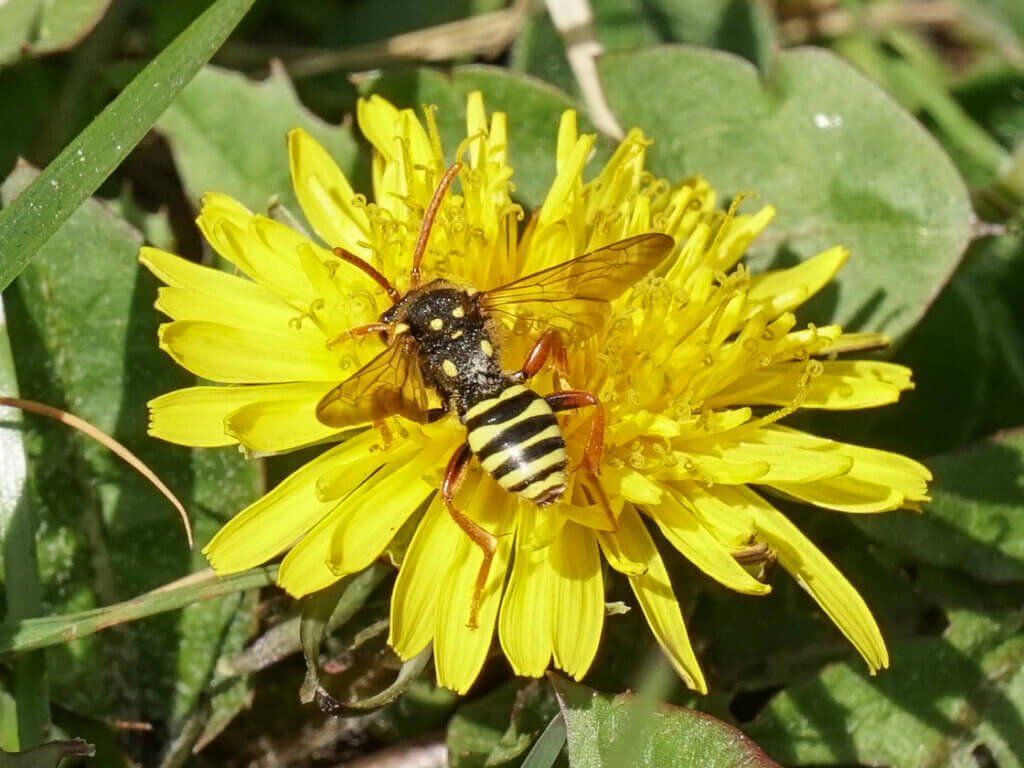
Social Distancing Week 5. Gooden’s Nomad Bee.
I love dandelions at this time of year. They are one of the main food sources for a huge variety of insects so a nice expanse of flowers in a sunny spot is an ideal place for watching and waiting. There is a grassy bank just along the road from where I live, which is such a spot. It’s a place where I can almost be guaranteed to find several solitary bees feeding on the dandelions.
Nomad Bees (Nomada) are solitary bees which are cleptoparasites, mainly of Mining Bees. The female enters the nest of the host species and lays an egg in an unsealed cell. When hatched the Nomada grub destroys the host grub and feeds on the food stored in the cell. Gooden’s Nomad Bee (Nomada goodeniana) is one of the commonest and widespread of the genus and can be found throughout England & Wales but gets less common as you go north. I live in North Yorkshire and can find them at several sites within walking distance of my house. They first appear around mid April. I notice them flying low to the ground, busily searching in the undergrowth, looking for nest sites of their host species or to find a mate. They’re about 12mm long and have quite a distinctive jizz with their narrow body, long antennae and yellow striped abdomen. Once spotted it’s then a matter of patience to wait until they need a rest and stop on a handy dandelion. Then I can get a much better view.
[registration_form]
Lovely photograph. Having tried and indeed continuing to try to photograph nomad and mining bees in the field I can say this is difficult. It takes a great deal of patience and skill, well done Paul.
Thank you Paul, I’m pretty sure I saw these on my (government sanctioned) walk this morning. You’ve reminded me to check the book. I’m trying to get to grips with solitary bees so it’s good to have a starting point. I didn’t try to take a photo with my phone because I knew I didn’t stand a chance. I’ll look out for them on dandelions next time.